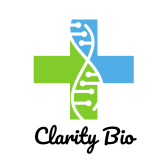Our team of experts can help you with your metabolomics needs across various platforms.
Our current focus is on analyzing liquid chromatography-mass spectrometry (LC-MS), and gas chromatography-MS (GC-MS) based metabolomics data.
Highly Accurate Results
The machine learning based tools help deconvolute the peaks, reduce the mass spectral and chemical noise and minimize wrong annotations. Clarity team has built proprietary methods to remove noise from the raw data which helps identify and quantify metabolites.
Thorough and detailed Analysis
We believe that each metabolite needs to be analyzed, given its place in the metabolic pathway together with other neighboring metabolites. Hence, the output from our tool is backed up by a dedicated and experienced analyst team that presents you with the metabolomics results in the context of knowledge available in the relevant metabolic pathway databases and scientific literature.
Time-Saving and Efficient
Our data analysis pipeline minimizes the time a human expert needs to invest in manual curation of the results while maintaining transparency and traceback. The tool allows interactive plotting ability should the user wish to examine some parts of the data in greater detail. Upon pre-processing the mass spectral data and conversion to the standard tabular format, the tool allows the application of various clustering and classification algorithms.
Advanced AI Software tool
The overall goal is to allow the scientists to focus on science as our tool does the toiling. The AI tool has been trained with data available in the public domain but curated by our experts.
Study Design
In order to achieve success in metabolomics studies, the study design is of paramount importance. Parameters like sample size, randomization, and storage need to be taken into account so that reproducible results with minimized erroneous variability can be delivered.
Most metabolites are not only present in small quantities in biological fluids but are also fragile. Further, any one chromatography protocol cannot cover all metabolites. A well-designed experimental pipeline can yield significantly better results and a wider metabolome coverage.
Protocol Development
The foundation of a good metabolomics study is the quality of the sample. This is ensured by developing a proper and time-tested protocol for sample collection, handling, and storage.
End-to-End Data Analysis
Our proprietary software performs all steps of data analysis, including pre-processing, peak picking, noise removal, identification and removal of degenerate features such as in-source fragments, adducts and isotopes, data cleaning/filtering, quantification of peak area, metabolite identification, univariate and multivariate statistical analysis, and interactive plotting. Our AI-powered software incorporates the latest algorithms and statistical tools for biomarker discovery.
Our team of data analysts and advanced software can save you months in data analysis time, resulting in faster publication or submission to regulatory agencies. We can also help you quantify 13C isotopic enrichment if your work involves 13C labeling studies.
Based on your needs and requirements, our team of analysts are trained to use popular open-source tools. Therefore, we can help you if you need to obtain results from validated and widely accepted open-source software.





